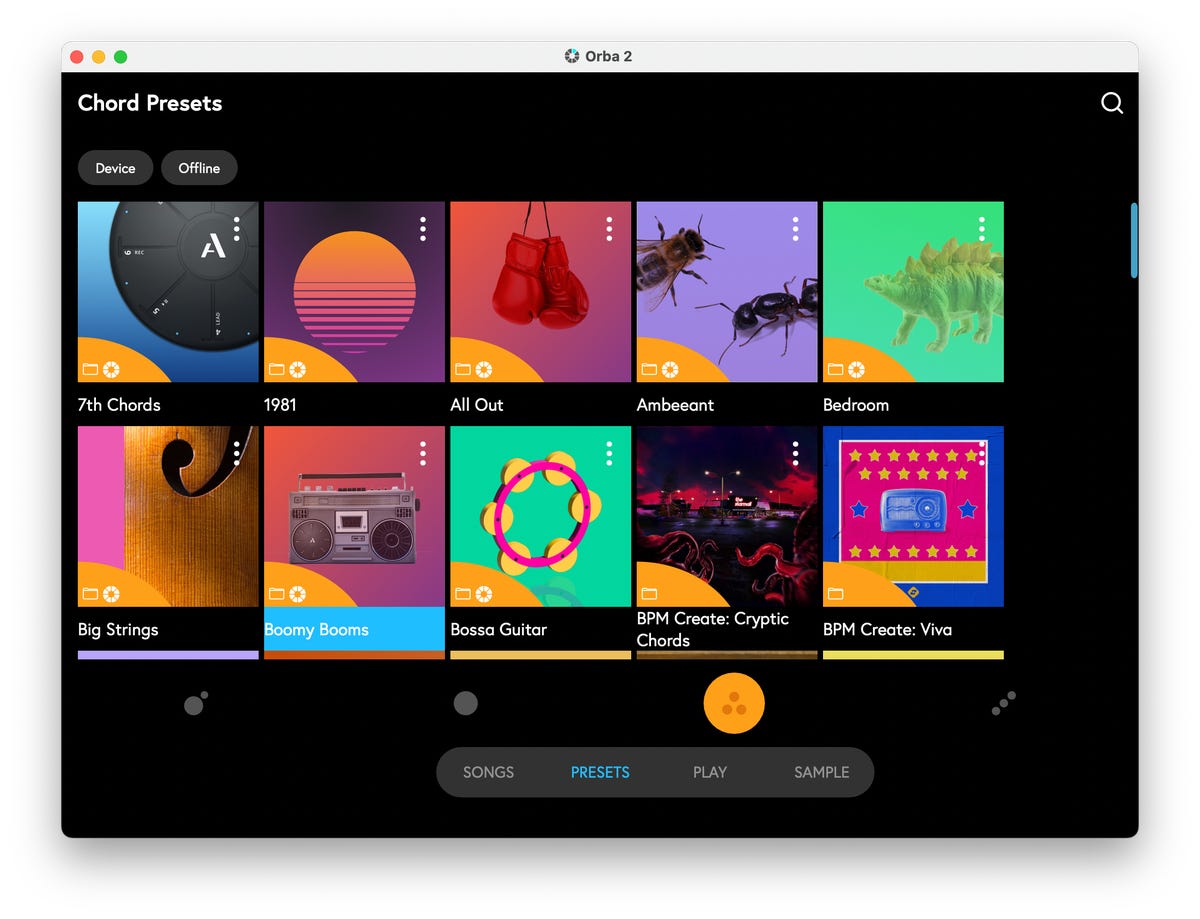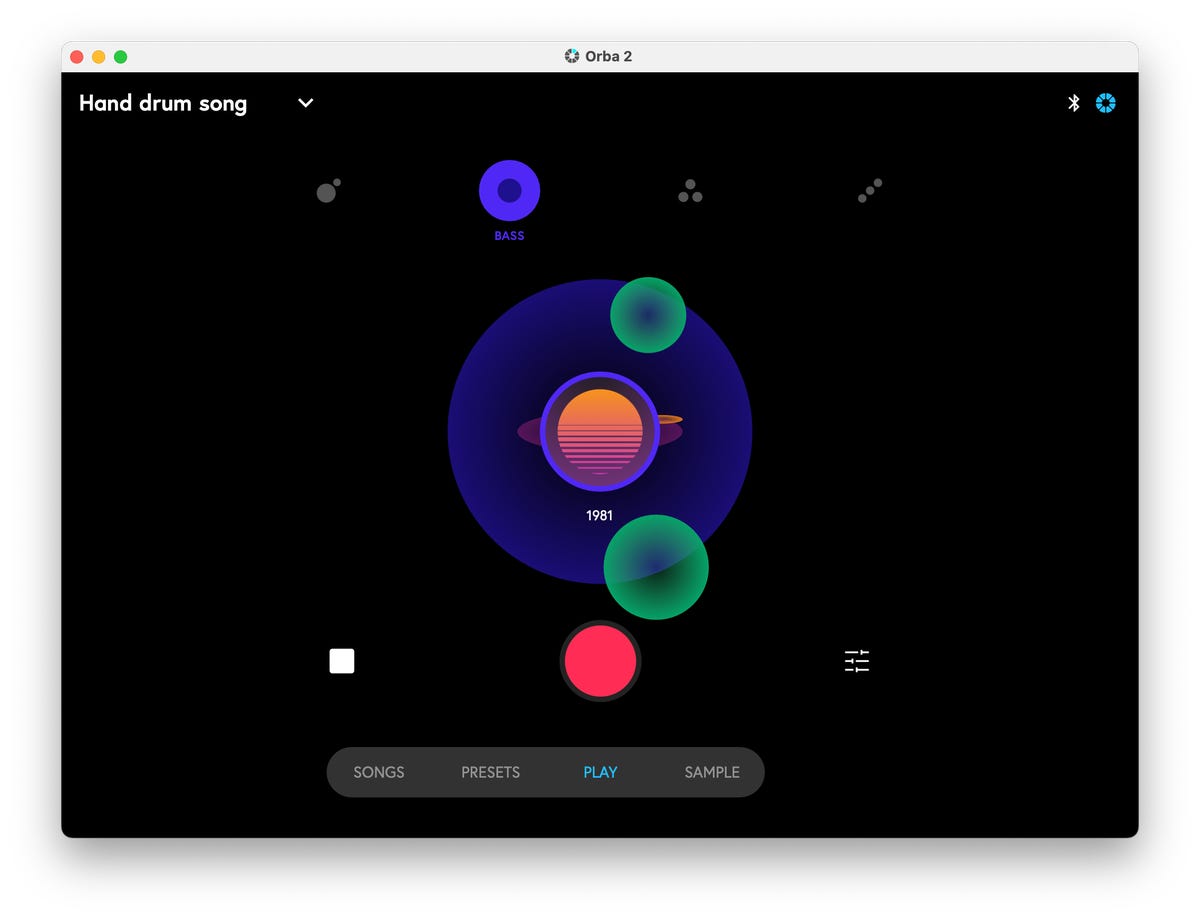As a casual musician, I enjoy recording original music in my small home office/studio for personal use, and enjoy experimenting with different methods to create interesting and sometimes unconventional musical compositions. Artiphon’s Orba 2 makes this easy. I’ve had a lot of fun with the little synthesizer, and can envision countless ways to incorporate it into my studio. Because this is not just a trick.
I spoke with Mike Butera, a musician with a PhD in sound studies and founder and CEO of Artiphon, a Nashville-based company that designs smart digital instruments. According to the company’s website, it is a “multi-sensory instrument that anyone can play.” Butera said he wants to make digital music more tangible, more tactile and more accessible to everyday consumers.
Orba 2 is one of the multi-sensory devices. This ergonomically designed synthesizer can be held in the palm of your hand. Artiphon sent me the Orba 2, and when I first picked it up and started playing with it, I couldn’t put it down for hours. I started by pairing the device with the Orba 2 app on my phone and experimenting with all the instruments and sounds preloaded on the app. Soon I had a sweet loop arranged with buzzing bass and killer ambient leads over a simple 4/4 rock beat.
The Orba 2 costs $150 and can be purchased directly from Artiphon, Reverb, or online from retailers such as Guitar Center and Sam Ash. It’s easy to play right out of the box and requires no musical knowledge to create truly amazing music. This unusual little instrument is incredibly versatile and so simple to use that it can turn anyone into a musician and makes a unique little gift.
Check it out at Artiphon
What is Orba2?
The Orba 2 is the successor to Artiphon’s original Orba device, which was released in 2019. This is a compact synthesizer, looper and MIDI controller the size and shape of an average orange cut in half. The Orba 2 has essentially the same design and interface as the original (with eight multi-function pads radiating from the top of the device), but offers improvements across the board.
Perhaps the most notable improvement in Orba 2 is that you can record literally any sound in the world into the app and play it back on your device. Strike a chord on your guitar, hum a tune, record a train whistle, and snap your fingers. You can jump into the ocean and record whale sounds to sample on Orba 2. Since you are going to do this, please use a waterproof recording device.)
Orba 2 also adds an “Auto Quantize” feature that helps you automatically fit your musical creations to the beat when looping music. Auto Quantize is a lifesaver if you don’t have a perfect rhythm because you don’t have to worry about getting it right. The software takes care of this automatically.
It also offers significantly more looping time than previous versions. While the original Orba only allowed 8 bar loops (up to 30 seconds of loop), Orba 2 is limited to 128 bars, or up to 5 minutes of loop time. This gives you ample time to create and iterate elaborate, comprehensive musical compositions consisting of drums, bass, chords (rhythm), and leads.
The device includes a standard 1/8-inch headphone stereo jack and a USB-C port for charging and connecting to a computer or other devices (it can also connect via Bluetooth). It’s equipped with a 3-watt speaker at the bottom, so it’s perfect for casual play in the living room, but you’ll want to plug in headphones to get the full effect.
Orba 2 is compatible with iOS 11 and higher, Android 9 and higher, MacOS 10.12 and higher, and Microsoft 10 (64-bit) and higher.
What can you do with Orba 2?
For such a simple-looking device, the Orba 2 offers a lot more features than you might expect, barring certain limitations.
It’s probably best used as a musical sketchpad to help you develop and save musical ideas. That’s where Orba 2’s portability and expanded looping capabilities come in really handy. Using the included app, you can save repeated songs and build on them later or just play them. And it’s small enough to keep on your desk or easily slip into your jacket pocket and play on the bus or in the park whenever inspiration strikes.
Orba 2’s 100+ presets run a variety of musical styles, from traditional synthesizers, bass guitar, piano, violin, and acoustic drums to video game sounds, beatboxing, hand drums, vinyl scratches, and meditative ambient sounds. Some presets in multiple modes share the same in-app artwork, so they sound good when played together. One of my favorite presets across modes is 1981, which really conveys a great Stranger Things vibe. Another preset I like is Ambeeant. This is perfect when you want to create a very calming and relaxing composition, such as a smooth late night groove or music you might hear in a dimly lit hookah lounge.


Orba 2 chord presets.
You can also record sounds from scratch or develop instruments to create your own presets using the separate OrbaSynth app, available for download from Artiphon. Recording sound is easy using the mobile or desktop app, but to export sound for use on Orba 2, you’ll need to connect Orba to your phone or computer using a USB cable. This is not a particularly convenient solution. I want to go back and record something and play it back on Orba right away. However, if you don’t have an Orba or a cable and record sound with your phone, you can save the recording and export it later.
One of my favorite things about Orba 2 is the responsive gesture controls. The pad on the top is sensitive to the touch and responds well to the intensity of your tapping. For example, you can place your finger on the pad and sound a musical note or crash cymbal. Or you can radiate your fingers in or out to add a little vibrato or control things like pitch or volume. Other movements include rotating, bumping, moving, shaking, and tilting. All of these actions help amplify the notes you’re playing and create some really cool sounds.
I also like how Artiphon does a great job of making the Orba 2 more accessible to non-musicians by programming lead presets to play pentatonic scales. This makes it easy to create a lead part that melodically fits your song no matter what notes you hit.
“The reason we did that was to build up a bit of a beat and then solo it so that it sounds good no matter what you press,” Adam McHeffey, Artiphon’s chief marketing officer, said in an interview. “It’s all about immediacy and having fun while playing. It’s not about making anything simple. It’s just about accessibility, relaxing and having fun.”
To get the most out of Orba 2, you can use it as a MIDI controller and connect it to digital audio workstations like GarageBand, Ableton Live, Logic Pro, Pro Tools, and Cubase. I connected the Orba 2 to GarageBand and it really opened up the full potential of this little device in terms of the different kinds of sounds and compositions you can create. I was able to export songs from Orba 2 to GarageBand, but only as a single track. There doesn’t seem to be a way to export individual tracks. Therefore, the best way to utilize GarageBand or other DAW software with Orba 2 is to start from scratch and create directly within the DAW.
It’s fun, but not without drawbacks.
Artiphon has some good points along with Orba 2, but it has some inherent drawbacks and room for improvement. First of all, changing octaves is simple and can be done on the Orba 2 itself, but there are only eight keys to play with, which makes accessing a wider range of notes much less seamless than when playing a traditional synthesizer. It’s a necessary but unfortunate compromise to the Orba 2’s compact size.
We also found the main Orba 2 app to be buggy overall on both mobile and desktop. It was frustrating to see frequent crashes, especially when trying to save songs and load songs saved to Orba. The app also lost connection with Orba at random intervals, forcing me to reconnect or re-pair with my phone and MacBook more often than I would like. Another thing I found frustrating was that you often couldn’t adjust the volume of individual instruments in a loop, even though the app indicated the option. Sometimes I wish I could turn the volume down a bit on the thumping drum beats I’d created to let the more subtle elements of my composition shine. Unfortunately most of the time the volume wouldn’t budge from 78% no matter what I did. Finished the exam. This really hindered my efforts to mix my compositions to sound the way I wanted them to sound. The software has tremendous potential, so I hope these small issues are addressed in future updates.


We love the app’s simple, intuitive navigation and great visuals, but it still needs to work out some bugs.
Orba 2 adds some great and useful features that make it a huge improvement over the original Orba, but one feature I hope will be available in a future firmware update is the ability to layer multiple presets of each individual mode on top of one mode. Other. For example, it would be helpful to be able to layer several different lead presets in a single loop configuration. For example, if you want not only a lead guitar part, but also a piano lead or a violin lead. This will give you the ability to add some nice dynamics to your song. If you currently have a lead part that is already looped and you want to change the lead instrument to something else, the original looped part will be changed to the other preset you selected. Of course, you can work around this by running Orba 2 through your DAW, but it would be nice to have the feature available through the app as well.
Is Orba 2 worth it?
Overall, I think the Orba 2 is a great little instrument if you’re a casual musician or want an easy way to create great-sounding music anytime, anywhere, even if you have no musical background at all. But professional musicians will probably want something with a bit more depth and range.
Orba 2 is unique and perfect for experimenting with a virtually infinite range of sonic possibilities in the palm of your hand. It’s a worthy addition to your home studio and can help add impressive dynamics to your music. It’s a great tool that lets you come up with new musical ideas on the fly, no matter where you are. And it’s just fun. If any of those appeal to you, then yes. Orba 2 is worth the money, so give it a try.


